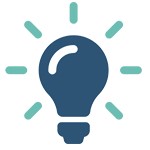energy consumption
How to reduce them with ioT
How to reduce them with ioT
Rising energy prices, the tertiary sector decree, energy efficiency, consuming better, consuming less… The energy consumption of buildings is more than ever the main topic of discussion.
Whatever the reasons for acting, we cannot ignore concerns about reducing energy consumption.
The size of the “energy consumption” budget, coupled with the challenges of protecting the planet, is driving all companies, building managers and owners to pay ever greater attention to their energy consumption.
The energy consumption of buildings is indeed one of the most important ecological challenges to be met. The building sector accounts for 44% of the energy consumption in France each year.
Renovating the building, acting on the behaviour of users, making better choices and using specific equipment… these are the three main levers of action that can be considered to reduce consumption and improve energy efficiency.
The implementation of an IoT solution can help you analyse the consumption habits of a building in order to reach your energy consumption objectives.
What is energy performance?
Energy performance refers to the amount of energy consumed by a building per year, in relation to the square meter. It varies according to the nature of the building, its operation and its equipment.
The authorities are taking more and more measures to reduce energy consumption. These legal obligations are aimed at preserving the planet and its resources.
Most buildings are now affected by various laws. For instance, we can mention:
Its purpose is to “build more housing, simplify standards, protect the most fragile and put the energy and digital transitions at the service of inhabitants”.
It specifies the terms of application of Article 175 of the ELAN law. It sets out the terms of implementation of the obligation to reduce the consumption of tertiary buildings (< 1000m2). It requires them to reduce their energy consumption by 40, 50 and 60% by 2030, 2040 and 2050.
It completes the tertiary decree by providing an obligation of ways to achieve the objectives set by the latter. It requires the installation of an automation and control system in buildings. The aim is to monitor consumption and regulate the building’s activities accordingly.
It requires companies with more than 250 employees to carry out an energy audit. This is mandatory every 4 years.
The next deadline is 5 December 2023.
Energy is an expense that often weighs heavily on a company’s budget. The direct consequence of using less energy is a proportional decrease in the amount of the related bill(s).
Given the tariff increases imposed in recent months and those likely to come, the importance given to this in companies is taking on a whole new dimension this year.
By paying attention to what we consume, we are directly involved in the fight against global warming. And it is with this in mind that the regulations presented above have been issued.
In addition, all actions taken to reduce energy consumption can be part of a CSR (Corporate Social Responsibility) approach.
The energy consumption items in a company are highly dependent on its sector of activity. However, some are often unavoidable:




Heating alone can account for up to 50% of energy consumption in a company.
In order to take effective measures to reduce energy consumption and fight against waste, it is first important to know how energy consumption is distributed.
This is the role of IoT sensors or connected sensors, which monitor the consumption of building equipments. To be exact, they enable the collection and analysis of water, gas and electricity consumption data.
With the help of IoT sensors, it will be possible to
Here are some examples of actions that can be taken to improve energy efficiency:

A drop of one-degree results in a 7% saving on the overall bill.
According to the recommendations of the ADEME, it is recommended to work in spaces at 19°C. The temperature can be lowered to 16°C when not in use and to 8°C if the premises are unoccupied for more than two days.²

According to the recommendations of the ADEME (French Environment and Energy Management Agency), air conditioning should be set at a maximum of 6°C above the outside temperature.²


A study by ADEME reveals that a computer in standby mode uses 20% to 40% of the equivalent of its power consumption when running. A photocopier consumes 80% of its energy in standby mode.

equip its AHU or CMV with sensors to detect the need to change the filter in advance and avoid over-consumption,
an indoor air quality (IAQ) analysis allows a better knowledge and understanding of ventilation needs and therefore better consumption.
Whatever the reasons for wanting to reduce our energy consumption, there are many ways of doing it. These actions have direct consequences on consumption.
A project to reduce energy consumption must be considered in the long term. To find the best sources of improvement, the help of an energy manager is very useful.
26/09/2022
expertise to support you, from the diagnosis to the implementation of your solution
